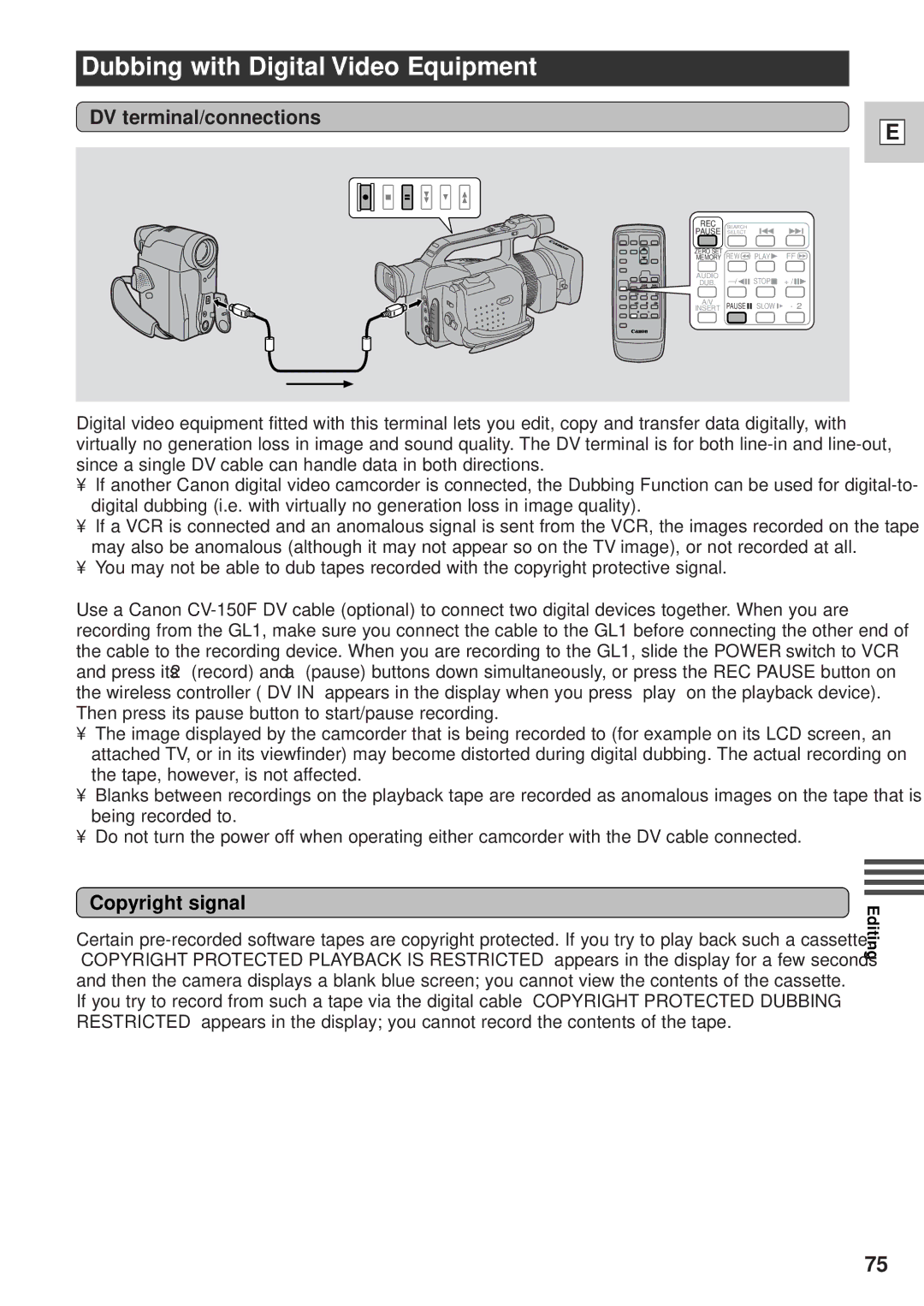
Dubbing with Digital Video Equipment
DV terminal/connections
REC | SEARCH |
|
|
PAUSE | SELECT |
|
|
ZERO SET | REW | PLAY | FF |
MEMORY | |||
AUDIO | STOP | + / | |
DUB. | |||
A/V | PAUSE | SLOW | × 2 |
INSERT |
E
Digital video equipment fitted with this terminal lets you edit, copy and transfer data digitally, with virtually no generation loss in image and sound quality. The DV terminal is for both
•If another Canon digital video camcorder is connected, the Dubbing Function can be used for
•If a VCR is connected and an anomalous signal is sent from the VCR, the images recorded on the tape may also be anomalous (although it may not appear so on the TV image), or not recorded at all.
•You may not be able to dub tapes recorded with the copyright protective signal.
Use a Canon
•The image displayed by the camcorder that is being recorded to (for example on its LCD screen, an attached TV, or in its viewfinder) may become distorted during digital dubbing. The actual recording on the tape, however, is not affected.
•Blanks between recordings on the playback tape are recorded as anomalous images on the tape that is being recorded to.
•Do not turn the power off when operating either camcorder with the DV cable connected.
Copyright signal
Certain
If you try to record from such a tape via the digital cable “COPYRIGHT PROTECTED DUBBING RESTRICTED” appears in the display; you cannot record the contents of the tape.
Editing
75
